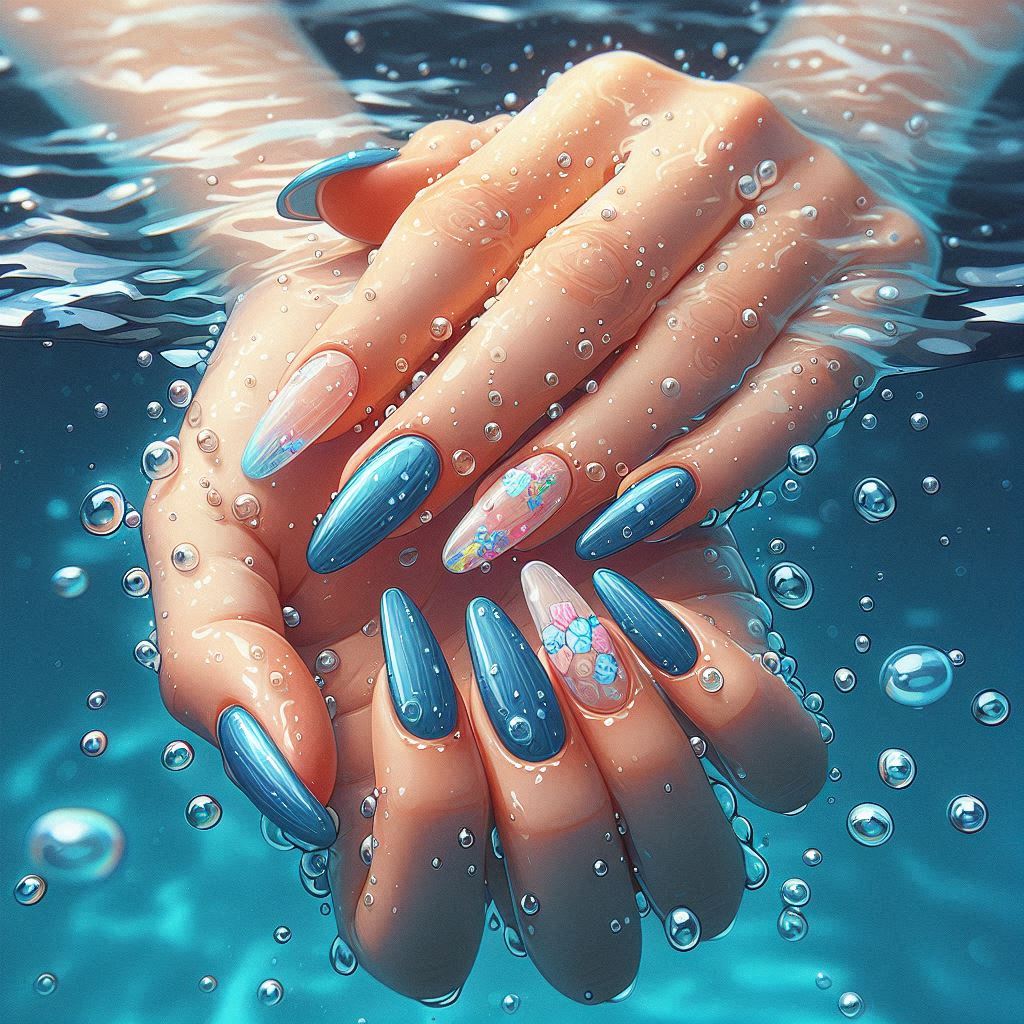Protect Acrylic Nails
The holiday season is the perfect time to showcase your creativity through nail art. Embrace traditional Christmas colors like deep reds, vibrant greens, and snowy whites. Consider adding shimmering gold or silver accents for that extra sparkle. Whether you prefer a classic red manicure or a bold green statement, the options are endless.
Chlorine’s Impact on Acrylics-Protect Acrylic Nails
Chlorine can have a significant impact on acrylic materials, particularly in environments like swimming pools or where cleaning products containing chlorine are used. Here are some key points to consider:
Chemical Resistance
Acrylic is generally resistant to many chemicals, but prolonged exposure to chlorine can lead to degradation over time. This is especially true for high concentrations of chlorine, such as those found in pool sanitizers.
Surface Damage
Chlorine can cause surface dulling or discoloration of acrylic. Over time, this can lead to a cloudy appearance, which can be aesthetically unpleasing.
Mechanical Properties
Continuous exposure to chlorine can weaken the structural integrity of acrylic, making it more susceptible to cracking or breaking. This is particularly important in applications like pool enclosures or displays.
Cleaning Agents
Many cleaning products used in pools contain chlorine. Using these products on acrylic surfaces can accelerate wear and tear. It’s advisable to use pH-neutral cleaners specifically designed for acrylic.
Swimming frequently in chlorinated water can affect acrylic nails. Here are some considerations

- Chlorine Exposure: Chlorine can weaken the bond of acrylics over time, potentially leading to lifting or chipping. The more you expose your nails to chlorine, the higher the risk.
- Nail Care: To minimize damage, consider applying a waterproof topcoat to your acrylics. This can help provide a barrier against chlorine.
- Maintenance: Regular maintenance and fills are essential, especially with frequent swimming. You might need to visit your nail technician more often to address any lifting or damage.
- Alternatives: If you’re concerned about the impact of swimming on acrylics, you might explore gel nails or other options that may be more resilient to water exposure.
In summary, while you can still get acrylics, be aware that the chlorine may affect their longevity and appearance. Regular maintenance and protective measures can help mitigate the impact.

